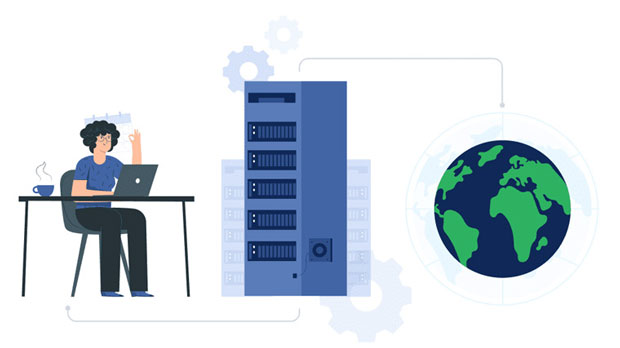In today’s digital age, online privacy has become a growing concern. Whether for personal protection or to safeguard sensitive data, users are increasingly turning to proxies to maintain their anonymity. SOCKS5, a versatile and widely used proxy protocol, offers robust privacy features when used within browsers like Chrome. This article explores how socks5 proxies can enhance privacy, particularly in Chrome, and provides strategies to maximize anonymity. By examining the functionality of SOCKS5 proxies, potential risks, and best practices, we can understand how to effectively use them to protect online privacy. Understanding socks5 proxy: What Does It Offer?Before diving into how SOCKS5 proxies can be used for enhanced privacy in Chrome, it’s essential to understand what SOCKS5 is and how it differs from other proxy types.What is a SOCKS5 Proxy?SOCKS5 (Socket Secure version 5) is a protocol designed to route internet traffic through a proxy server. Unlike standard HTTP proxies that only work with web traffic, SOCKS5 can route any type of traffic, including HTTP, FTP, and P2P. This flexibility makes it a powerful tool for users who wish to mask their real IP address, avoid geographical restrictions, or bypass censorship.Key Features of SOCKS5:1. Anonymity: SOCKS5 proxies provide a higher level of anonymity by masking the user's IP address. This makes it difficult for third parties to track browsing activities or identify the user's location.2. No Data Modification: SOCKS5 proxies do not modify the data packets, unlike HTTP proxies. This means less risk of data corruption or privacy leaks.3. Protocol Agnostic: SOCKS5 can be used with any internet protocol, making it more versatile than other proxies that are limited to specific types of traffic.Why Use SOCKS5 in Chrome for Privacy?Google Chrome is one of the most popular browsers worldwide, and while it provides some privacy features, it is not inherently anonymous. By configuring a SOCKS5 proxy in Chrome, users can take advantage of additional layers of privacy protection. Here’s why SOCKS5 is beneficial:1. Masking Your IP Address:When browsing the web, your real IP address is exposed to websites, advertisers, and even hackers. By routing your traffic through a SOCKS5 proxy, your IP address is masked, and instead, the website sees the proxy server’s IP address. This helps prevent the tracking of your online activities and reduces the chances of targeted ads based on your location or browsing history.2. Bypassing Geo-blocking and Censorship:SOCKS5 proxies are often used to bypass geo-restrictions and access content that may be blocked in certain regions. By choosing a proxy located in a different country, users can access websites, streaming services, and other content that may otherwise be unavailable in their region. This also helps with circumventing internet censorship imposed by governments or institutions.3. Better Speed and Stability:While some proxy protocols may slow down your internet speed, SOCKS5 is known for maintaining a relatively stable and fast connection. It supports both UDP and TCP traffic, which enhances its overall performance. By selecting a fast and reliable socks5 proxy server, users can enjoy a smoother browsing experience while still benefiting from the privacy advantages it offers.How to Maximize Privacy with SOCKS5 Proxy in ChromeTo maximize privacy when using SOCKS5 proxies in Chrome, there are several steps and best practices to follow. These include proper configuration, additional security measures, and vigilance while browsing.1. Configuring SOCKS5 Proxy in Chrome:Proper setup is crucial for ensuring that all traffic is routed through the proxy server. Here’s a step-by-step guide for configuring a SOCKS5 proxy in Chrome:- Open Chrome Settings: Click the three vertical dots in the top-right corner of the browser, then select "Settings."- Go to Advanced Settings: Scroll down and click "Advanced" to reveal more options.- Change Proxy Settings: Under "System," select "Open your computer’s proxy settings." This will open the system’s network settings.- Configure SOCKS5 Proxy: In the proxy settings, select the option to configure a SOCKS5 proxy, and enter the server address and port number. Ensure you select the appropriate authentication method if required.Once configured, all your traffic will be routed through the SOCKS5 proxy server, providing you with enhanced anonymity.2. Using Secure and Anonymous SOCKS5 Servers:The quality of the SOCKS5 proxy server plays a critical role in maintaining privacy. It’s important to choose servers that offer strong encryption and do not log user activity. Some SOCKS5 proxies may log your IP address or browsing history, which could compromise your privacy. Therefore, it is advisable to ensure that the SOCKS5 proxy service you are using adheres to a strict no-logs policy.3. Combining SOCKS5 Proxy with Other Privacy Tools:While SOCKS5 proxies provide excellent privacy protection, combining them with other security tools can further enhance your anonymity online. Here are a few methods for doing so:- Use HTTPS Everywhere: Ensure that you are using encrypted connections for all websites. Chrome does this automatically for most sites, but using an extension like HTTPS Everywhere can help enforce this for sites that don’t default to HTTPS.- Enable WebRTC Leak Protection: WebRTC is a feature in Chrome that allows real-time communication but can potentially leak your real IP address even when using a proxy. Disabling WebRTC or using extensions that block WebRTC leaks can help mitigate this issue.- Consider Using a VPN in Tandem: A VPN combined with SOCKS5 offers a higher level of security and anonymity. The VPN encrypts your traffic and hides your IP address before it even reaches the SOCKS5 proxy, making it much harder for anyone to trace your activities.4. Regularly Clear Your Cookies and Cache:Cookies and cached data can be used to track your online activity. Even with a SOCKS5 proxy, it is essential to clear these files regularly. You can set Chrome to automatically delete cookies when you close the browser or use extensions to manage cookies more efficiently.5. Be Mindful of Browser Fingerprinting:Browser fingerprinting is a technique that websites use to track users based on unique characteristics of their browser and device. Even with a SOCKS5 proxy, websites may still identify you based on your device’s fingerprint. To combat this, you can use extensions that help mask or modify your fingerprint, such as privacy-focused browser extensions that randomize elements like user-agent strings, screen resolution, and fonts.Limitations and Potential Risks of SOCKS5 ProxiesWhile SOCKS5 proxies are an excellent privacy tool, they are not entirely foolproof. There are certain limitations and risks to be aware of:1. Potential IP Leaks:Even with SOCKS5, there is a risk of IP leaks. This can occur if the proxy server is misconfigured or if there is a failure in the connection between the proxy and your device. To minimize this risk, ensure your SOCKS5 proxy server is secure, and always test for leaks using online tools.2. Limited Encryption:While SOCKS5 is great for privacy, it doesn’t provide built-in encryption. This is why it’s often used in conjunction with other security measures, such as a VPN or HTTPS connections. Without proper encryption, your data can still be vulnerable to interception.3. Trustworthiness of the Proxy Provider:If you’re using a third-party SOCKS5 service, you need to trust the provider. Some proxy providers may log your activity or misuse your data, potentially compromising your privacy.Conclusion: Maximizing Your Privacy with SOCKS5 Proxy in ChromeUsing a SOCKS5 proxy in Chrome can significantly enhance your online privacy by masking your IP address, bypassing geo-restrictions, and preventing tracking. However, to truly maximize privacy, it is essential to configure your proxy properly, combine it with additional security tools, and remain vigilant about potential risks such as IP leaks and browser fingerprinting. By following best practices, you can ensure that your use of SOCKS5 proxies contributes to a safer and more anonymous browsing experience.
Jan 02, 2025






















































